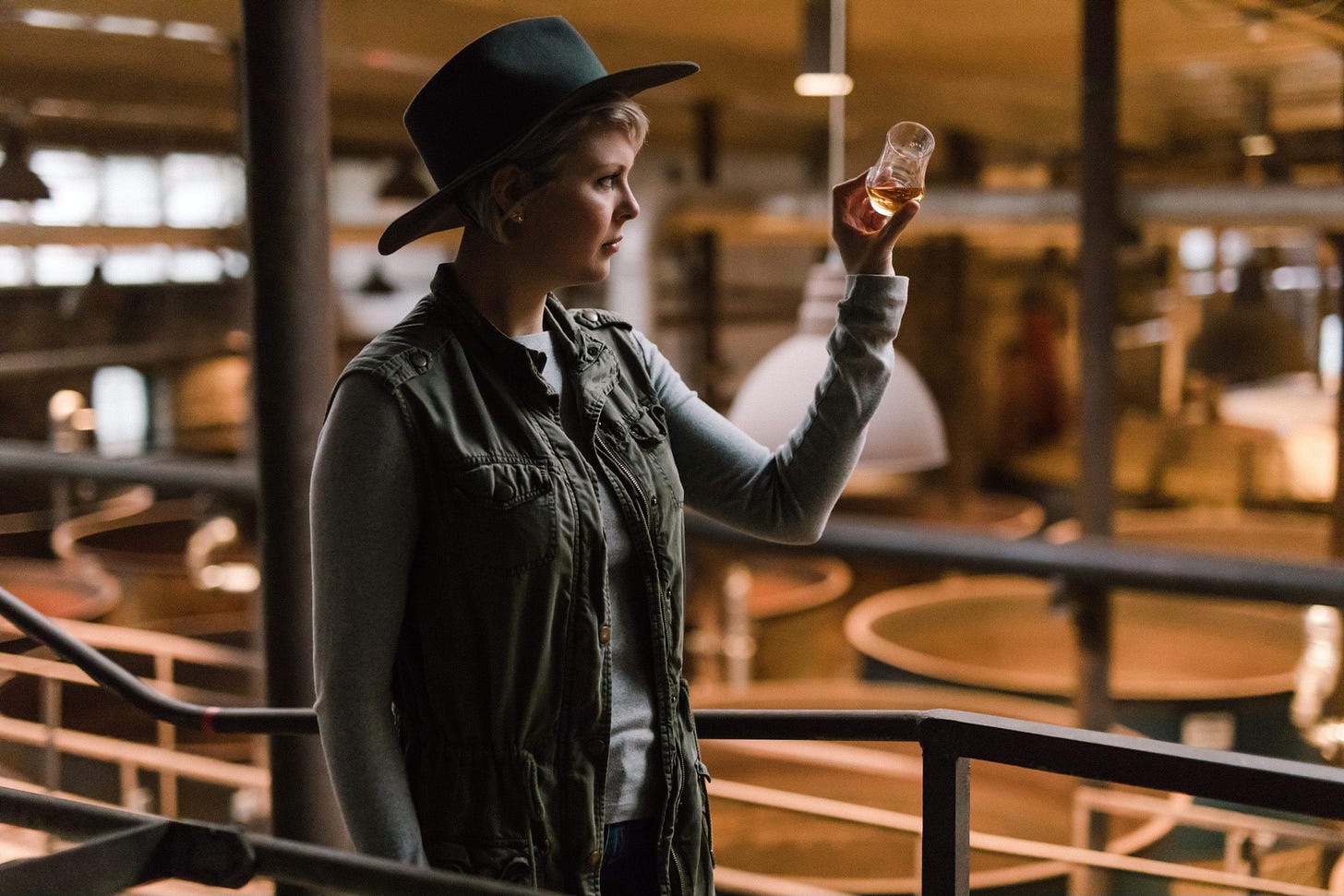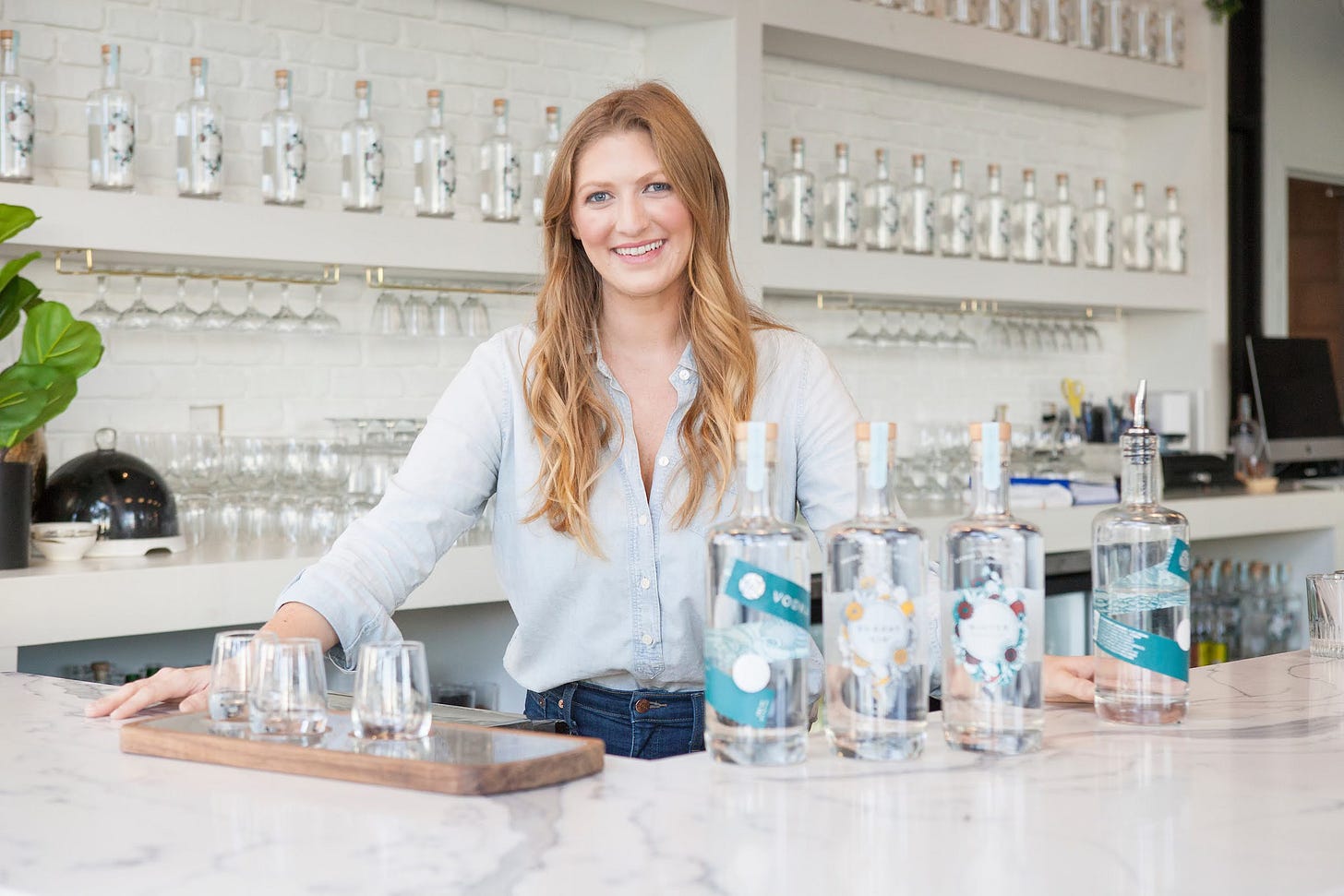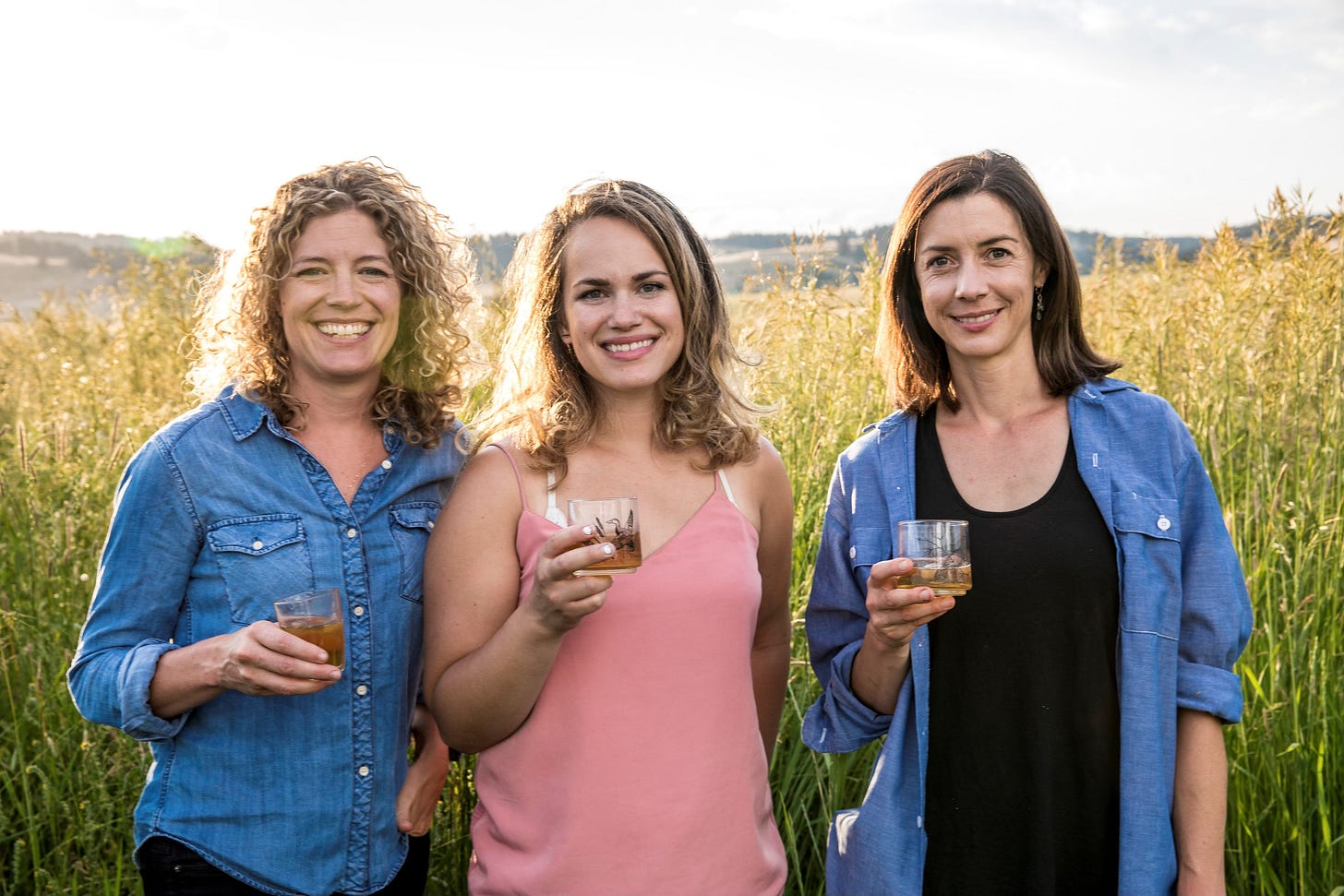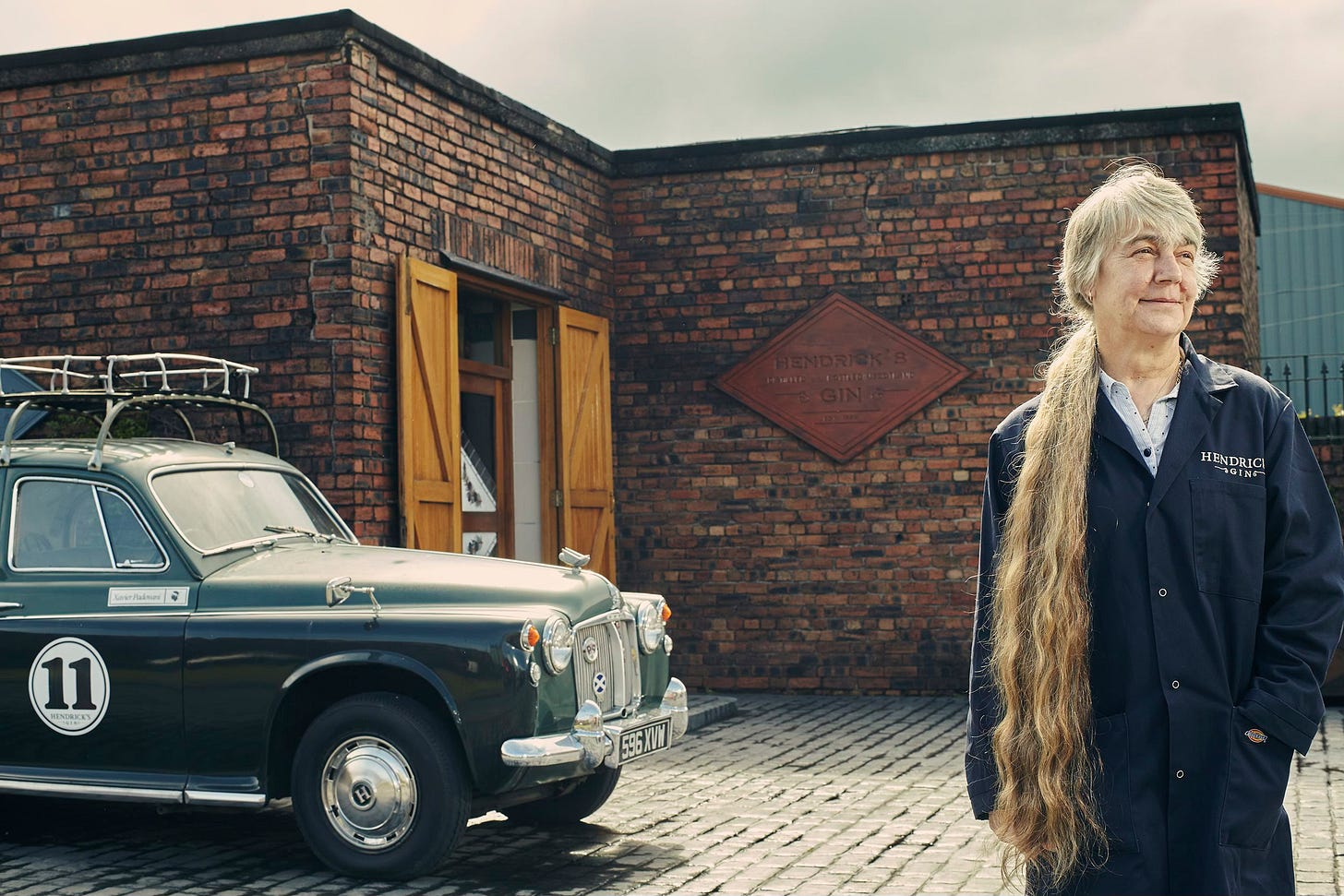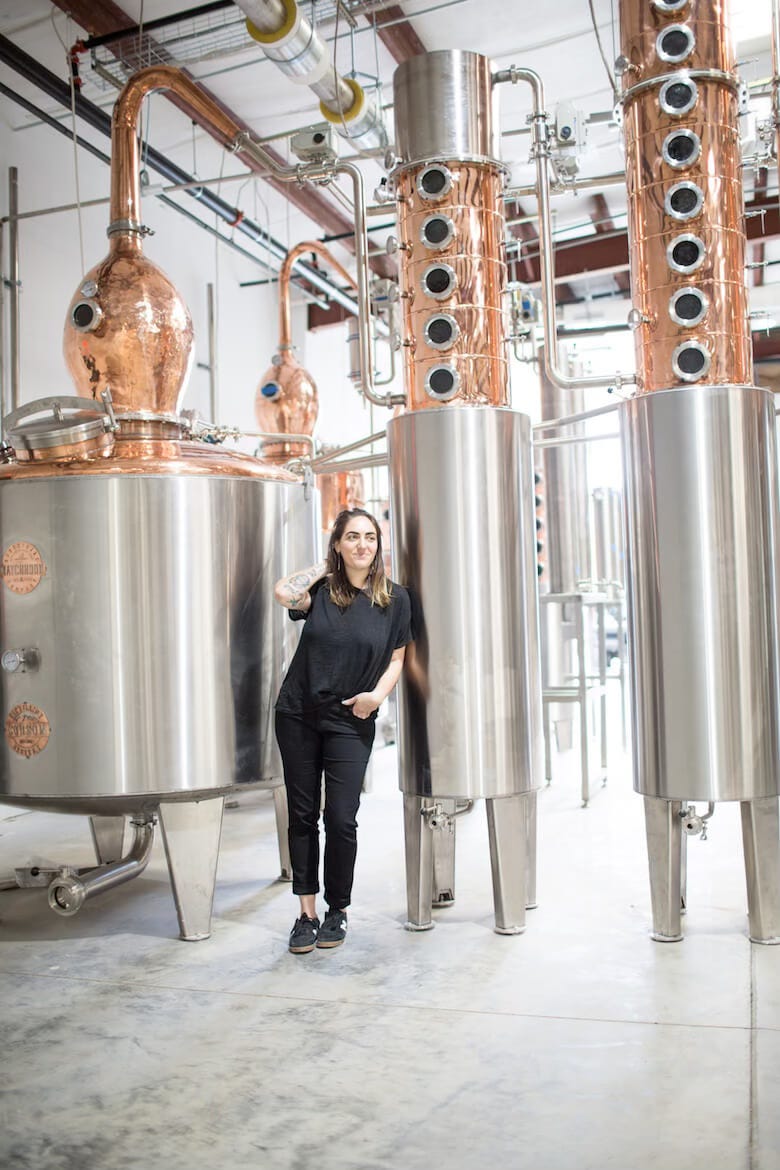Women Distillers Making Waves in the Gin World
Revisiting a story I wrote in 2019 because, for some reason, it no longer exists on the internet.
Don’t you hate it when your work mysteriously vanishes? It’s funny because when you actually want to remove something from the web, it’s not easy, but some publications have really weird, really annoying archiving systems (or rules, like Lonely Planet, for example—the site will replace your name on a story when someone else updates it or will delete your work altogether, if it’s been a couple years). But anyway, I wrote this for Liquor.com in 2019. It was really fun to interview all these women, I was very proud of how the story turned out, and because I was recently in Greenport, where one of these distilleries is located, I figured I should dig up the draft and re-share.
If you’re a gin drinker, tell me what you love about it! Do you have a favorite distillery? Or a distiller you really look up to? Would love to hear.
Women Distillers Making Waves in the Gin World
Who run the gin world? These days, it seems like it’s the women who are moving on up and quickly. From New York to Portland and all the way to Scotland, female gin distillers are teaming up and making a place for themselves in an industry that’s always been a bit of a boys’ club. With genetics on our side (think more in-tune taste buds and 16.2M cells in the olfactory bulb vs. just 9.2M total for men), it’s no wonder women are creating complex flavors that are a smash hit for everyone, male or female. Below, some noteworthy gin makers who have one big thing in common: they’ve taken a risk in the spirits space and have, in turn, produced something beautiful.
Marianne Eaves, Castle & Key (Lexington, KY)
With a chemical engineering degree, Marianne Eaves hadn’t really considered making booze for a living when she was selected for a coveted internship at a global spirits company in Kentucky. Now she distills gin (and bourbon) with locally-sourced ingredients at a century-plus-old historic site. Castle & Key officially opened to the public in September 2018 and this is where Eaves distills her Restoration Release Gin at 106 proof rather than the typical 80 proof because of the way the flavors are expressed. According to Eaves, everything at Castle & Key is “garden to glass.”
As far as Eaves’ favorite recipe goes, it seems that less is more. “I love a well-made, creative Old Fashioned. This is a very simple cocktail that can be jazzed up in a million ways. I particularly enjoy a Castle & Key Gin Old Fashioned using honey syrup and savory, nutty bitters.”
A word of advice for women interested in getting into distilling or a similar field: “Don’t be afraid to do the scary thing. It’s OK if you don’t know it all; there is time to learn and there are people to learn from. Don’t be shy about joining your male colleagues for a drink—this is an opportunity to build relationships, gain confidence in yourself, and also build your network of support. Be gracious, be brave, and always trust that your passion will lead you.”
Marianne is now an independent spirits consultant, according to this article.
Laura Johnson, You & Yours Distilling Co. (San Diego, CA)
For Laura Johnson, the path to becoming a distiller was interesting, as it seems to be for most women trying to break into the field. After immersing herself in workshops and master classes, she started reaching out to distilleries for an apprenticeship. No one gave her the chance and so she decided to trust in herself, raise the capital, write a business plan and continue learning along the way. Almost three years later, You & Yours, an urban destination distillery in San Diego, was born.
What exactly is “urban destination distilling?” According to Johnson, it’s just a fancy way of saying her distillery is located downtown and open to the public. There aren’t many distilleries like this in California, or even in the country, and Johnson loves that she can offer quality hospitality along with quality spirits to locals as well as visitors in San Diego.
“To other women in the industry, I would say learn as much as you can. Find your local guild and show up to their gatherings,” Johnson says. “Introduce yourself and keep introducing yourself and do everything you can to make those relationships. If you're able, I'd highly recommend Moonshine University's courses for education.”
Jill Kuehler, Freeland Gin (Portland, OR)
In business for just about a year, Jill Kuehler transitioned from the nonprofit world and began making gin and whiskey after a night of drinks and conversation with one of her rancher friends. Kuehler had always loved spirits and didn’t see many brands telling the story of local farmers. She wanted to change that so she tracked down Molly Troupe in Bend, Oregon, an amazing distiller and “total pro” who earned a master’s in brewing and distilling in Scotland.
“There are so few women in ranching and distilling,” Kuehler says to me on a phone call. “Their story deserves to be told.”
She convinced Troupe to move out to Portland to work with her at Freeland, the distillery named after Kuehler’s grandma, who never touched booze in her life, but spent a lot of time in the garden and believed that good things come from scratch. Freeland uses a Rotovap for vacuum distillation. Per Kuehler, “We're the only distillery (that we know of) doing a combination of vacuum and traditional heat distillation.”
“It’s an incredible time to be a woman in the alcohol space,” Kuehler tells me. She shares that even though there are more women in brewing and the wine community is way ahead of gin, women have more taste buds and 50 percent more olfactory cells than men. The sensory experience hasn’t fully been acknowledged, but highlighting the work of women is one of her goals.
The Freeland team even created a cocktail that honors the spirit of female mixologists and distillers. Ode to Ada (made for Ada Coleman, who was the head bartender at Savoy Hotel in London for 23 years) includes 2 oz. Freeland Gin, 1 oz. Sweet Vermouth and 1/4 oz Fernet Branca. It’s an easy one to recreate. Just stir in a mixing glass, strain and serve up with a dehydrated blood orange.
Claire Fletcher, Alicia MacInnes and Georgina Kitching, Lussa Gin (Jura, Scotland)
When three women get together with an idea, the end result is usually pretty incredible. This was absolutely the case with Fletcher, MacInnes and Kitching, who were neighbors on the Isle of Jura, a place with few work opportunities and a population of just over 200 people. A chance conversation about their shared love of the island, growing things and gin in 2015 led to a bit of experimentation with a 10-liter still. The women ended up making 4,000 bottles in the kitchen while renovating an old stable, where they would eventually house a 200-liter copper still.
Though gin production in Scotland is no different than anywhere else, as far as Fletcher is aware, the country does have a long history of distilling. What makes Lussa Gin different is that the brand uses 15 botanicals all grown on or foraged from the island, everything from juniper and rose petals to bog myrtle, Scots pine needles, sea lettuce to lemon thyme. The women also distill themselves using local spring water, then bottle and label the gin—all on the island.
“The alcohol industry is definitely a man's world, but there are more and more women joining the ranks,” says Fletcher. “None of us had any experience distilling—it helped that Georgina used to be a high school science teacher—so we made a lot of mistakes in the beginning, but nearly four years later, we've honed our skills and are delighted with our award-winning gin.”
Lesley Gracie, Hendrick’s Gin (Scotland)
20 years ago, Lesley Gracie (along with fellow Master Distiller, John Ross) crafted the recipe for Hendrick’s Gin as we know it. Today, she’s still one of only four people privy to the recipe that includes 11 different botanicals. Yes, cucumbers and rose essences are part of the mix, but we might be kept in the dark about the other nine forever.
The Yorkshire-born chemist by trade moved to Scotland to join Hendrick’s in 1988 and has since handcrafted her award-winning gin in super small batches, in order to finetune the distillation process and ensure a high-quality product. Working in a male-dominated field hasn’t presented Gracie with challenges thus far. Her nose is one of the highest-rated in the industry, after all. Gracie sits on the International Spirits Challenge judging panel, alongside other qualified men and women and she also leads the New Liquid Development team at Hendrick’s.
This past year, Hendrick’s revealed a new space, the Hendrick’s Gin Palace, where Gracie plays with signature flavors and created Orbium, a new and delightfully complex gin released in December that has hints of lotus blossom essences and wormwood.
“If you are passionate about something, then just go for it,” Gracie says. She is certain that every step in her career, from studying chemistry to an early job in pharmaceuticals, has led her to work with plants and botanicals in a unique way.
One of her favorite cocktails, aptly named the Lesley Gracie, combines Hendrick’s with elderflower cordial and soda water. Plenty of ice and a cucumber garnish make for a tasty, refreshing and delightfully understated beverage.
Leslie Merinoff, Matchbook Distilling Co. (Greenport, NY)
Just 30 years old, Merinoff is looking to disrupt the spirits world by making small-batch spirits accessible — at the cost of $15,000 per barrel — to bars, restaurants, start-ups and private collectors. All you need is an idea and the cash, of course, and Merinoff will help bring it to life in a town where there are a few wineries and breweries, but she’s the only one, really, with expertise in distilling spirits.
As of now, she’s offering three spirits for production including a standard bourbon, a chocolatey four-grain bourbon with malted oats and a newly-designated single malt empire rye, but in the spring she’ll launch her bespoke gin program, with wedding season in mind. We can’t wait to see what she’ll come up with!
This article was originally published April 1, 2019 via Liquor.com.





